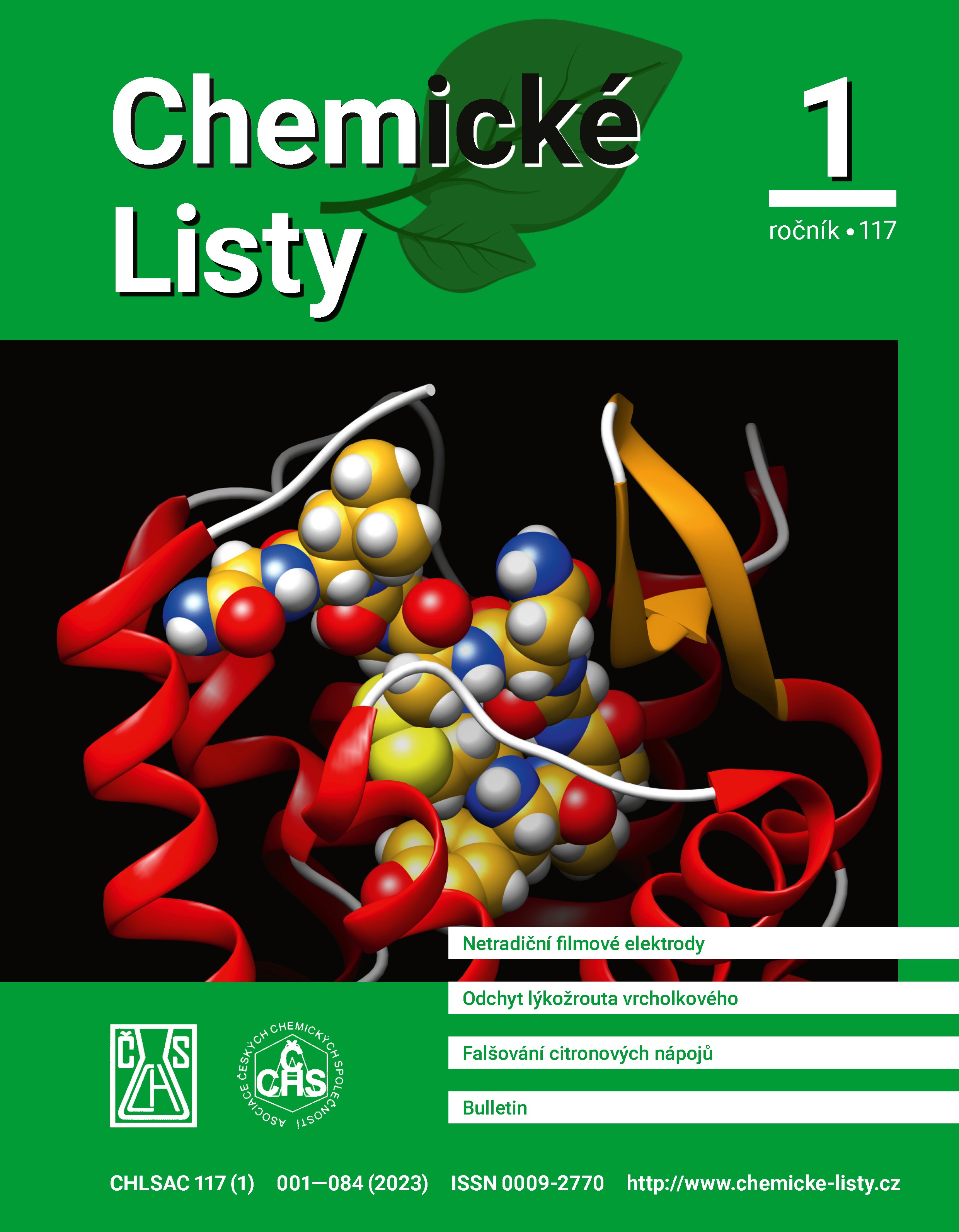Možnosti detekce falšování citronových šťáv a nápojů na bázi citronů
DOI:
https://doi.org/10.54779/chl20230023Klíčová slova:
citronová šťáva, autenticita, falšování, citronová kyselina, askorbová kyselina, eriocitrinAbstrakt
Lemon juice and other lemon-based beverages are subject to economically motivated fraud, primarily including a reduced fruit content closely related to excessive dilution with water, undeclared addition of sugars or synthetic citric acid, and substitution of lemons with cheaper fruit. Eight tested samples of 100% juices showed good agreement between the measured concentrations and the reference values for the following markers: formol number (range from 16.9 to 26.5 mL of 0.1M NaOH 100 mL–1), ash (2.5 to 3.9 g L–1), phosphorus (84 to 145 mg L–1), potassium (931 to 1720 mg L–1), magnesium (81 to 114 mg L–1), malic acid (1.8 to 6.0 g L–1), and ᴅ‑isocitric acid (277 to 560 mg L–1). The following markers were suggested as an evidence of adulteration, processing method, and recipe alteration after the subsequent analysis of the beverage concentrates: 1) Citric acid is a substance whose content can be increased by adding synthetic citric acid. 2) Calcium content was impacted by clarification or reconstitution in some beverage concentrate samples tested. 3) Increased content of glucose and fructose confirmed exogenous sugar addition. 4) Ascorbic acid levels below 150 mg L–1 indicated severe processing or long-term storage. The flavonoid profile, characterized mainly by the ratio of eriocitrin and hesperidin (average value 0.7), serves as an indicator of the addition of another citrus species. However, the finding for the Interdonato variety suggests that this ratio is quite variable and not entirely specific because lime juice exhibits a similar value.

Citronová šťáva a další nápoje na bázi citronů podléhají ekonomicky motivovaným podvodům, mezi které primárně patří snížený obsah ovoce úzce spojený s nadměrným naředěním vodou, nedeklarovaným přídavkem cukrů nebo syntetické citronové kyseliny a záměnou citronů levnějším druhem ovoce. U 8 testovaných vzorků 100% šťáv byla potvrzena dobrá shoda naměřených koncentrací s referenčními hodnotami u těchto znaků: formolové číslo (rozsah 16,9 až 26,5 ml 0,1M NaOH 100 ml–1), popel (2,5 až 3,9 g l–1), fosfor (84 až 145 mg l–1), draslík (931 až 1720 mg l–1), hořčík (81 až 114 mg l–1), jablečná kyselina (1,8 až 6,0 g l–1) a ᴅ-isocitronová kyselina (277 až 560 mg l–1). Po následném proměření nápojových koncentrátů byly jako indikátory falšování, způsobu zpracování a úpravy receptury doporučeny tyto markery: 1) obsah citronové kyseliny, jejíž nálezy mohou být zvýšeny přídavkem citronové kyseliny syntetického původu, 2) obsah vápníku, který byl u řady testovaných vzorků ovlivněn čiřením nebo rekonstitucí koncentrátu, 3) zvýšená hodnota glukosy a fruktosy potvrzovala exogenní přídavek cukrů, 4) pokles askorbové kyseliny pod 150 mg l–1 vypovídal o nešetrném zpracování nebo dlouhodobém skladování. Profil flavonoidů charakterizovaný především poměrem eriocitrinu a hesperidinu (průměrná hodnota 0,7) slouží jako indikátor přídavku jiného citrusového druhu. Je však třeba brát v potaz, že je poměrně variabilní, což ukázal nález zjištěný pro odrůdu Interdonato a ne zcela specifický, protože obdobný poměr vykazuje i šťáva z limet.





